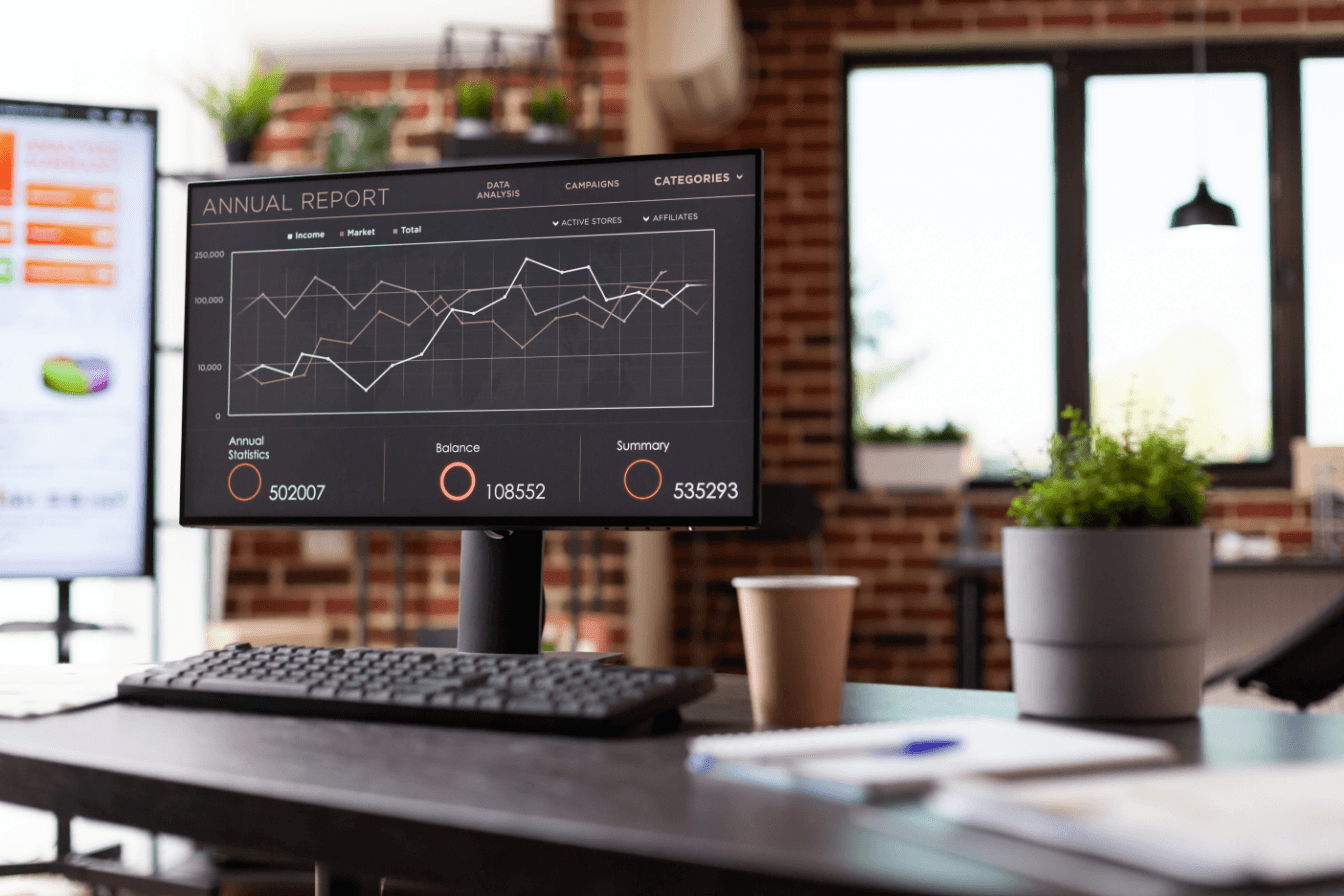The Evolution of ERP and Productivity Tools: Navigating the Future
The enterprise resource planning (ERP) and productivity tools market has experienced profound changes over the decades. These tools, initially designed to streamline operations and improve efficiency, have become indispensable for modern businesses. As technology advances, the ERP and productivity landscape continues to evolve, promising even more transformative changes. This blog explores how the market has evolved, current trends, and what lies ahead.
DAte
Feb 10, 2024
Category
Product Development
Reading Time
10 Min
The Evolution of ERP and Productivity Tools: Navigating the Future
The enterprise resource planning (ERP) and productivity tools market has experienced profound changes over the decades. These tools, initially designed to streamline operations and improve efficiency, have become indispensable for modern businesses. As technology advances, the ERP and productivity landscape continues to evolve, promising even more transformative changes. This blog explores how the market has evolved, current trends, and what lies ahead.
The Evolution of ERP and Productivity Tools
The Origins and Early Development
The concept of ERP began in the 1960s with the advent of Material Requirements Planning (MRP) systems, which helped manufacturers manage inventory and production planning. In the 1980s, MRP evolved into MRP II, incorporating additional functionalities such as shop floor and distribution management.
The Rise of Integrated ERP Systems
In the 1990s, ERP systems emerged, integrating various business processes into a single unified system. These on-premises solutions provided modules for finance, HR, manufacturing, supply chain, and more, enabling organizations to streamline operations and improve data accuracy.
The Shift to Cloud-Based Solutions
The 2000s witnessed a significant shift towards cloud-based ERP systems. These solutions offered greater flexibility, scalability, and cost-effectiveness compared to traditional on-premises systems. Companies could now access their ERP systems from anywhere, facilitating remote work and global collaboration.
The Integration of Advanced Technologies
In the 2010s, the integration of advanced technologies such as artificial intelligence (AI), machine learning (ML), and big data analytics began to transform ERP systems. These technologies provided enhanced data insights, predictive analytics, and automation capabilities, enabling businesses to make more informed decisions.
Key Trends in the Current Landscape
Cloud-Based Solutions
Cloud computing continues to revolutionize the ERP and productivity market. Businesses are moving away from traditional on-premises systems to cloud-based solutions that offer enhanced flexibility, scalability, and reduced IT costs. This shift allows companies to adapt quickly to changing business needs and supports remote work environments.
Artificial Intelligence and Machine Learning
AI and ML are now integral to modern ERP and productivity tools. These technologies enable advanced data analytics, predictive insights, and process automation. AI-driven ERP systems can optimize supply chains, forecast demand, and personalize customer experiences, driving efficiency and competitiveness.
Integration and Interoperability
The need for seamless integration and interoperability between different systems has led to the development of robust APIs and integration platforms. Modern ERP systems and productivity tools can now communicate effectively with other applications, reducing data silos and enhancing workflow automation.
User Experience and Mobility
User experience (UX) has become a critical factor in the adoption of ERP and productivity tools. Solutions that offer intuitive interfaces and mobile accessibility are in high demand. Businesses seek tools that not only meet functional requirements but also provide a pleasant and efficient user experience, leading to higher adoption rates and productivity.
Focus on SMBs
Traditionally dominated by large enterprises, the ERP market is increasingly targeting small and medium-sized businesses (SMBs). Vendors are offering more affordable and scalable solutions tailored to the needs of SMBs, democratizing access to powerful ERP and productivity tools.
The Future: What Lies Ahead
Advanced AI and Predictive Analytics
The future of ERP and productivity tools will see even deeper integration of AI and predictive analytics. These technologies will evolve to offer real-time insights and recommendations, enabling businesses to proactively address challenges and seize opportunities. From predictive maintenance in manufacturing to personalized marketing strategies, AI-driven ERP systems will drive smarter decision-making.
Enhanced Collaboration and Communication
As remote and hybrid work models become the norm, the need for enhanced collaboration and communication tools will grow. Future productivity tools will focus on creating seamless virtual work environments, integrating video conferencing, project management, and real-time collaboration features into ERP systems.
Blockchain for Security and Transparency
Blockchain technology holds promise for enhancing security and transparency in ERP systems. By providing immutable records and secure transactions, blockchain can help businesses protect sensitive data, improve supply chain traceability, and ensure regulatory compliance.
Internet of Things (IoT) Integration
The integration of IoT with ERP systems will enable businesses to gather real-time data from connected devices and sensors. This will enhance process automation, asset management, and operational efficiency. For instance, IoT-enabled ERP systems can monitor equipment performance, predict maintenance needs, and optimize inventory levels.
Customization and Personalization
Future ERP and productivity tools will offer greater customization and personalization options. Businesses will be able to tailor these solutions to their specific needs, ensuring that they align perfectly with their processes and workflows. This level of customization will drive higher adoption rates and improve overall productivity.
Sustainability and Social Responsibility
As businesses increasingly prioritize sustainability and social responsibility, ERP systems will evolve to support these goals. Future tools will help companies track and report on their environmental impact, optimize resource usage, and ensure ethical supply chain practices.
Conclusion
The ERP and productivity tools market has come a long way, evolving from basic inventory management systems to sophisticated, cloud-based, AI-driven solutions. As technology continues to advance, the future promises even more exciting developments. Businesses that stay ahead of these trends and embrace the latest innovations will be well-positioned to thrive in an increasingly competitive and dynamic market. By leveraging these tools to drive efficiency, foster collaboration, and achieve strategic goals, companies can navigate the future with confidence and success.
Author
Radhika
Radhika is a technology consultant with over 15 years of experience in enterprise solutions and digital transformation. She specializes in optimizing workflows and driving sustainable growth through innovative automation strategies.



